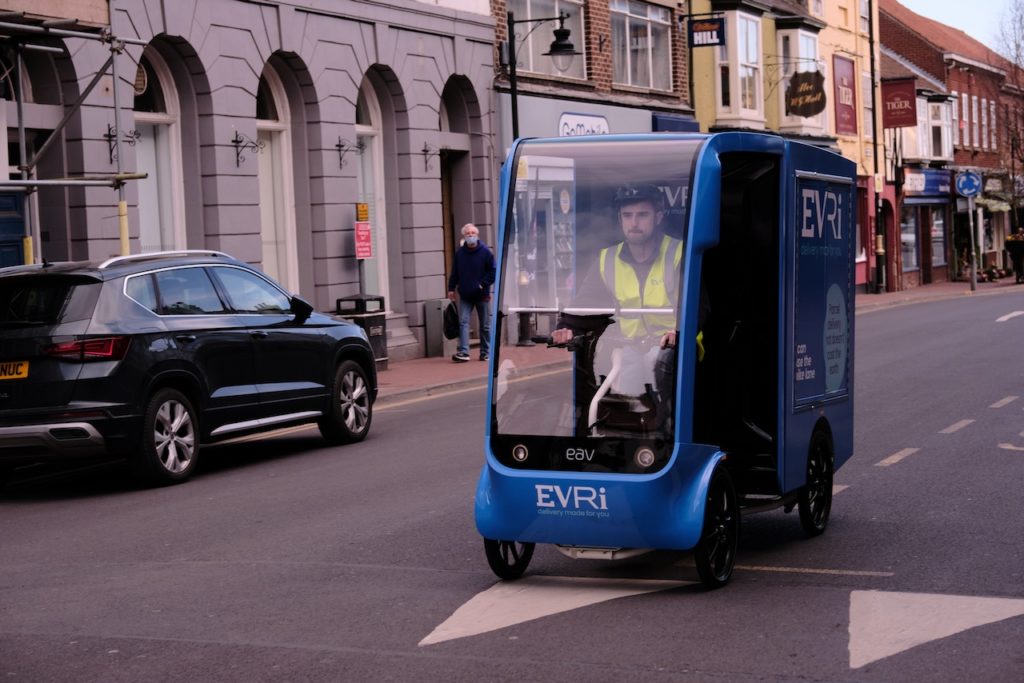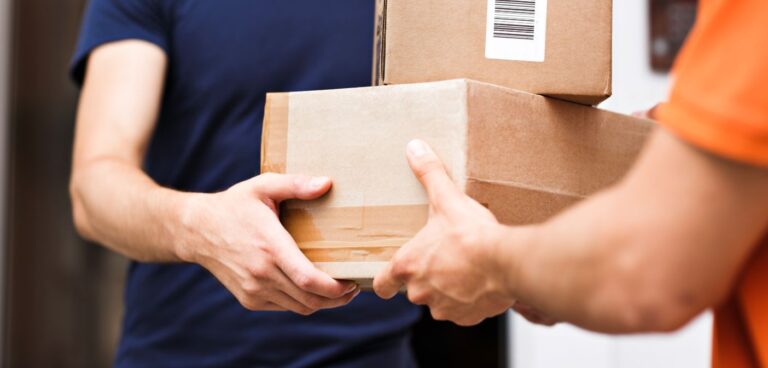The e-commerce boom and growing environmental consciousness of consumers is leading logistics firms to rethink delivery methods, Michelle Mooney reports…
Increasing orders and environmental concerns are pushing the last mile to breaking point but operators are finding new ways to transform their operations for the better, and “planet positivity” is at the forefront of operations, explains Dan Myers, managing director, UK and Ireland, XPO Logistics. He explains that the company is investing in its last mile by investing in alternative fuels and “charging capabilities at new sites, as well as using alternative modes of transport for some deliveries, typically in urban areas.”
However, digital technologies are also being utilised by the 3PL, to improve last mile operations, such as machine learning and route optimisation technology. This not only improves the speed at which deliveries are made, but reduces the company’s carbon emissions. Multimodal solutions for urban areas are “often tailored to specific local circumstances” he says, which allows them to evolve with changes to the surroundings.
“Solutions that operate at zero or low emissions can make deliveries within clean air zones without incurring penalties.” Another method for optimising the last mile, Myers explains, is through “dynamic optimisation”, as the delivery speed which customers now demand, he adds, can “only be achieved through intelligent, dynamic planning tools” which react to changing circumstances, such as a last-minute delivery change, “to produce the best outcome”.
The demand for last mile has skyrocketed thanks to a huge demand in online orders, the highest demand for e-commerce in 13 years, says Chris Walshe, sales and operations director, Stanley.
To meet such a spike in demand, Walshe notes, “retailers introduced different solutions such as ‘click and collect’, as well as ‘pop-up’ temporary warehousing to create additional capacity to fulfil this demand.” And now there is an even bigger emphasis on the last mile and the quality of deliveries straight to customers. Solutions such as “e-bikes and e-scooters work well for quick and easy light deliveries,” he explains, but there is also a requirement for delivery drivers to be able to deliver heavier goods safely and efficiently, and while e-cargo bikes while more environmentally conscious than HGVs, are not the answer for bulk deliveries.
“Moving heavy and awkward loads is an extremely laborious task and if there are stairs involved, it proves for an even bigger challenge. Aside from the limitations of manpower, handling such loads can cause severe injury if not carried out correctly.” The physical obstacles presented in the last mile can either make an operation or break it. Customers will raise complaints when goods aren’t delivered, and a reason for this is ease of access to the delivery driver who might not have the proper tools to make a delivery, especially when it comes to heavy orders.
Loading injuries are common, says Walshe, but the right equipment can make a delivery safer and faster. One such technology becoming more popular in the last mile is stair climbing technology and other vehicle loading solutions. He adds that these physical technologies can be supplemented with digital ones, such as artificial intelligence devices that monitor lifting and loads are also helping to “make the job of delivering often goods safer and easier.”
Another way operators are transforming their last mile operations is through micromobility platforms, explains Colin Paterson from DriveTech, part of the AA. He says that while heavy goods vehicles account for “just 5% of miles travelled, they emit 17% of transport-related greenhouse gas (GHG) emissions”, making them one of the worst offenders for carbon emissions in the supply chain. This sort of technology has seen a huge increase in use as new ‘green air zones’ have been introduced, including ultra-low emission zones. These initiatives have led to an uprise in the use of alternative modes of transport for the last mile in the form of micromobility such as e-cargo bikes.

These modes of transport are especially popular in urban areas. “Typically, micromobility vehicles use 5% of the energy that an EV requires to make an equivalent trip, with their manufacture also less emission-intensive”, insists Paterson. He adds that, for 1-kilowatt-hour, an EV can travel 4.1 miles, while an e-scooter can travel 82.8 miles, so we are likely to see this as a growing trend in our cities in the future.”
However, e-bikes and e-scooters are not the only micromobility technology making waves in the last mile, Paterson argues. “Autonomous vehicles could be a solution to inner city traffic congestion, carbon emissions, double parking, and the disruption caused by the increasing number of delivery vehicles.” He explains that on-board technology can help to resolve such issues through intelligent driving systems. The roll-out of trials for autonomous vehicles is being expedited by the nation-wide roll-out of 5G.
Seb Robert, CEO and founder of Gophr agrees and details that autonomous deliveries are set to be a “game-changer” in the last mile, however, they are also a long way off from taking off on a large scale. However, the last mile sector is largely “fragmented” he adds, and inefficient because of this. However, any solution that can address these issues would have a significant impact on reducing CO2 emissions, he argues.
The fix to rising emissions and inefficiencies in the last mile is to make the change to electric vehicles and pedal power where it makes sense, like urban, congested areas, says Robert. Alongside this, he says that operators can work with “reputable carbon offsetting companies” that put the environment first. However, the road to sustainable electric vehicles may be a long one until more environmentally conscious materials are used like silicon, because as Robert says, “lithium isn’t without its own impacts.”
While companies work to improve the last mile, existing forms of transport, such as HGVs will continue to dominate our roads. However, even these are becoming more ‘sustainable’ and efficient. Nancy Hobhouse, Head of ESG for Hermes explains that the company is using biomethane compressed natural gas, (CNG) for its f leet. The fuel is derived from food waste from its partner CNG Fuels. So if trials continue to be successful, the alternative fuel will be rolled out further across the company.
Doing the heavy lifting
Initiatives like e-cargo bikes and autonomous vehicles have a great opportunity to shine during local deliveries from smaller local stores, suggests Seb Robert, CEO and founder of Gophr. HGVs need not take up space in smaller urban environments if they are not making bulk deliveries. These ‘store to door’ methods are better suited to delivering goods direct from warehouses and distribution centres, while smaller forms of transport, namely micromobility such as e-bikes, can be a better alternative for navigating local orders.Ever-evolving consumer trends
There is a heavy focus now on the environment and much of the reason companies are changing their outlook and becoming more environmentally conscious, is due to consumer concerns. Not only are customers demanding more sustainable deliveries, they are also demanding faster deliveries; two demands which could be contradictory. Yet many last mile providers are consolidating efficiency with sustainability. “The challenge for our industry is not to get locked into thinking of it as a trade-off but instead find new ways to provide both speed and environmental protection”, explains Dan Myers, managing director, UK and Ireland, XPO Logistics.
This article was originally published in the June issue of CiTTi magazine.





